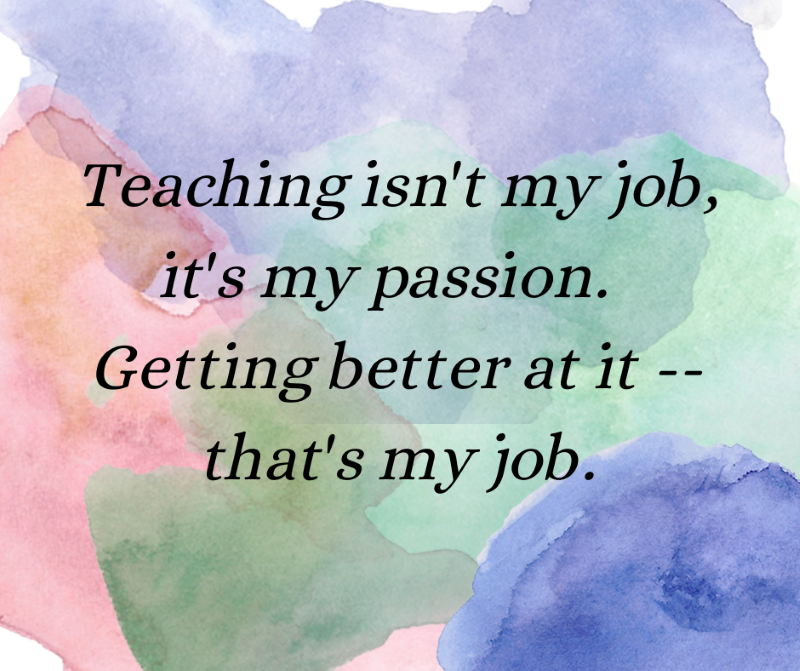Traits That Make a Teacher Great
By Dr. David Shaffer
Every teacher wants to be a good teacher. But like all good things in this world, it takes effort. It takes an effort to consider what you have done, what your goals are, and what you can do to improve upon what you have done. Such reflection should be done regularly because, no matter how well we might think we are doing as a teacher, there is always some aspect that could be improved upon.
Last month, we discussed five traits that very good language teachers exhibit: a solid understanding of the subject matter, using current teaching methodology and techniques, using a well-balanced approach, being a life-long learner, and belonging to a professional learning community. I hope you have taken some time over the past month to reflect on these, and I hope you have been able to develop some action plans to level up your teaching skills.
The five skills discussed previously are by no means the only traits common to top-notch language teachers nor are they necessarily the most important. Here we will discuss several additional traits that superior language teachers exhibit. So, make yourself comfortable – preferably in a spot where you can intermittently pause to reflect on your own relation to the traits being discussed – and let us commence!

Having a Passion for Teaching
Some teachers have wanted to teach since they were old enough to go to kindergarten; others might not have considered teaching until a friend asked them for help in learning English. But regardless of when a teacher decided to pursue teaching as a career, exemplary teachers enjoy teaching; they have a passion for teaching; they want to help their students learn.
If a teacher enjoys being in a classroom with a group of students, this joy will shine through, and the students will notice it. And when the students notice this, the learning experience will be more enjoyable for them, too! On the other hand, if the teacher appears to be unenthusiastic about teaching, the students will also pick up on this, and their mood will cool, their motivation will drop, and their performance will be lackluster. So, we need to be aware of the impression we give to our students. It is not enough to just be passionate; we need to exude that passion so that it can be transmitted to our students. A teacher’s passion for teaching translates into student passion for learning.
Moment for Reflection: How successful are you at manifesting your passion for teaching?
Knowing One’s Students
Good teachers know their students well. But what does it mean to “know” a student? Does it mean to merely be able to place a name on a face when nominating students, or is there more to it? Yes, there is more to it, but the importance of knowing one’s students’ names should not be underestimated. In a recent KOTESOL Reflective Practice SIG online session on student names, it was amazing to hear the differences in student motivation observed in classes where the teacher took it upon themself to learn their students’ names. Learning student names indicates to the students that their teacher has an interest in them as an individual, which results in the formation of a more congenial student–teacher relationship.
Things that come to mind when thinking of what knowing a student entails include teachers knowing what their students’ first language is, what their living situation is like, what their interests are (e.g., music, board games, dinosaurs, cartoons, cars, movies, travel), and these are all important to know. Good teachers know what a student’s favorite school subjects are, while a very good teacher will also know that student’s insecurities about school. A good teacher will know a student’s academic strengths, while a very good teacher will also know a student’s personal strengths. A good teacher will know how to motivate their students, but a very good teacher will also know how to help them find self-motivation. In addition to knowing how to help students do well in their English class, a very good teacher will know how to help them succeed as individuals.
Moment for Reflection: How well do you really “know” your students as individuals?

Understanding Students’ Needs
Dovetailing with “knowing one’s students” is “understanding their needs.” Have you ever admonished an elementary school student for not bringing their pencil case or crayons to school? Or have you ever reprimanded a university student for missing classes? It may be that the elementary school student’s family’s financial situation is such that they cannot afford all of the school supplies that families are expected to provide. And it may be that the university student is missing classes because they have a nighttime part-time job to help cover their boarding and tuition expenses. Students and their families may have financial needs that the teacher is unaware of but may come to realize these through dialogue with the student.
Although Korea is among the most extensively wired nations in the world. A teacher may therefore think nothing of giving a homework assignment that involves the use of a smartphone. However, there are still four percent of high school students who do not have a smartphone, though instead they may have a lower-tech mobile phone. Teachers need to know individual student access to technology.
Some students come to every class with their assignments completed and completed well; other students not so well. It is so easy for the teacher to label the former as “good” students and the latter as, well, “not-so-good.” However, it just may be the case, especially in the lower grade levels, that the “good” students have parents that are heavily involved in their children’s education, while other parents, for whatever reason, are not. Once aware of this parental involvement difference, the teacher can provide the extra help, which just might propel the “not-so-good” student past the “good” ones. Teachers need to be aware of the learning support that their students receive or do not receive outside of the classroom.
It is hard to say what the exact percentage of students with learning disabilities is because of differences in definition and in measuring methods, but it is safe to say that the prevalence of learning disabilities in school-aged children is 5–10 percent. That is one to two students in every class of 20! Detecting student learning disabilities is not easy for the untrained teacher. If training is not supplied by the school, online tutorials are another option.
In understanding our students’ needs, simple classroom observation, as illustrated above, may be insufficient and misleading. For older students, a needs analysis in the form of a questionnaire can be enlightening; for younger students, dialogue with the student, their parents, and with former teachers of the student can be informative. The point is that very good teachers are aware of their students’ needs.
Moment for Reflection: How well are you aware of your students’ needs – be they financial, technology, or support for learning?
Knowing How to Engage One’s Students
The keyword in this heading is “engage.” Over the years and decades, ELT has been moving from teacher-centered to student-centered learning. In the student-centered classroom, the teacher may see their students in small groups interacting with each other – and doing it in English. The teacher may take pride in seeing their students so involved. What is the extent of their involvement? Are they merely interacting because the teacher told them to talk to each other? Or did the teacher explain why they are doing this activity and how it can be helpful in improving their language skills? Did the teacher give them choices (e.g., choice of topics to discuss, choice of discussion partners, choice in determining discussion time, etc.), which create a sense of agency in the student – the feeling that they are in charge, to a certain degree, of their own learning? Are the activities one-off, one-class-period activities or do they include weeks-long projects, which also provide student agency as well as a better understanding of how instructed learning relates to the real world outside the classroom? The good teacher gets their students involved, while the very good teacher gets their students engaged – the students understand why they are doing what they are doing, they feel that they have agency, and they enjoy their involvement.
Moment for Reflection: Are your students truly engaged in their tasks in class – are they engaged with a sense of purpose, or are they merely involved?

Creating an Environment for Learning
The items discussed above go a long way towards creating a positive, welcoming learning environment in that they contribute to creating a strong, trusting teacher–student relationship. Students react positively to teacher passion, to teachers knowing about them and understanding their needs, and to being provided with a sense of agency and an understanding of why they are learning what they are learning. However, the physical environment should not be overlooked.
Many things in the physical environment can affect student mood and volition to learn. And very good teachers are aware of these. Is the room too bright or too dark? Is the temperature too warm or too cold? Is the room cluttered or clean? Is the seating arrangement conducive to the activity being undertaken? Is there a space for students to get up out of their seats for mingling activities? Are the classroom walls drab or are they covered with colorful English posters and student projects? Is the technology adjusted well – proper volume, clear focus, etc.?
Moment for Reflection: How optimal are the learning environments that you and your students are active in?
I hope you have taken a moment in each section above to reflect on your own personal situation and consider how you might be able to improve. As teachers, we all have room for improvement. After all, isn’t that what reflective practice is for?
Gwangju-Jeonnam KOTESOL
Upcoming Events
Gwangju-Jeonnam Chapter Field Trip: Let’s Explore the Gwangju Biennale Together!
- Venue: Gwangju Biennale Exhibition Hall
- Address: 111 Biennale-ro, Buk-gu, Gwangju [61104]
- Date: June 10, 2023
- We will meet at the main entrance to the Exhibition Hall at 2 p.m. and enter together. (Individual ticket price: 16,000 won)
Check the Chapter’s webpages and Facebook group periodically for updates on chapter events and other online and in-person KOTESOL activities.
For full event details:
- Website: http://koreatesol.org/gwangju
- Facebook: Gwangju-Jeonnam KOTESOL
The Author
David Shaffer, PhD, has been involved in TEFL, teacher training, writing, and research in Gwangju for many years as a professor at Chosun University. As vice-president of the Gwangju-Jeonnam Chapter of KOTESOL, he invites you to participate in the Chapter’s teacher development workshops and events (in person and online) and in KOTESOL activities in general. Dr. Shaffer is a past president of KOTESOL and is the editor-in-chief of the Gwangju News.







